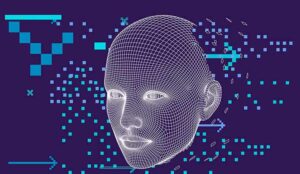Vincent Van Den Bossche of Wisper shares her thoughts on how the future workstation will look, in the contact centre and beyond.
Not so long ago, the role of a chief information officer was to install mainframe computers and their huge towers, perform peer-to-peer updates, assist users in using the computer resource, troubleshoot employees who had been infected by a virus and ensure the maintenance of workstations.
For some, it was a good time. But this was without counting on the permanent evolution of new technologies, laws and new needs more generally.
The Evolving Role of DSI
From now on, the tasks of the CIO are no longer the same. As its role has evolved, so has its environment. The CIO must keep a constant watch on new technologies and decide which ones will bring maximum benefits for the organization. Benefits that can be:
- better data security,
- better productivity of its employees,
- better control of infrastructure costs
- …etc
Uses have evolved rapidly. For example, a CIO would be offered new terminals for employees, and became responsible for fleets of laptops, tablets and other smartphones, a colossal job in end-of-life materials management and replacement cycles.
Another problem, and not the least, is the arrival of generations Y and Z on the job market: digital natives “who pose serious problems in computing”.
Indeed, these generations were born with computers, and their knowledge and therefore intrinsically their requirements in terms of workstations are of a completely different degree. Indeed this young generation needs more mobility and requires the IT department to consider multi-device, BYOD (bring your own device) and teleworking.
So What Will Be Tomorrow’s Workstation Environment?
Workspaces as we know them today will undergo major changes. American models like Google, Facebook, Amazon… take precedence over the classic national models.
Industries of the future, point of sale 4.0, this (r)evolution will probably affect all sectors of activity, implying a new position of the CIO in organizations.
The IT department is in the process of becoming a service company within the company itself, for the company’s businesses and various Business Units.
On the program, Open-space, Zen spaces, separate work spaces but also in the home office. Moreover, for this last point, the order of 22 September to overturn the obligations of CIOs, which must now find a flexible solution to meet these new needs.
What Current and Future Opportunities Are Available to the IT Asset Manager?
There are several options that I will try to detail:
- BYOD (Bring Your Own Device): i.e. the employer authorizes its employees to use their own computer equipment while allowing them access to the company’s computer environment: storage spaces / file sharing, messaging, business software, etc..
- COPE (Corporate Owned, Personally Enabled): The employer chooses, buys and configures the workstation of the employee by creating 2 distinct spaces to have a professional part and a personal part.
- CYOD (Choose Your Owned Device): In this case, the employee chooses their own equipment and the company pays the bill. This does not mean, however, that the employee has the right to use it for personal use. This option implies a strong heterogeneity of the desktop park, and makes it particularly difficult to maintain, to manage and to secure.
Here are already three different methods that can give you some ideas. This is of course only a sample, solutions related to employee mobility are constantly emerging, to the delight of users.
The Challenge of Nomadic Posts
It is true that this does not respond to the problem of nomadic employees. So why not combine classic with new technologies? As a decoration combining vintage and modern? What innovative and future solutions can we adopt to this problem?
- A PC of the future but invisible? A solution to run a pre-configured and centrally managed OS and applications using the hardware resources to run a high-performance corporate virtual machine, without any server infrastructure.
- Tablets? They largely respond to the nomadic problem. More and more used in companies and appreciated by commercials, the capacities and software remain limited, however. Even if Microsoft has made a lot of efforts on the tablet, their cost remains a blocking point.
- Smartphones? For the text edition we knew better, but perhaps manufacturers will have some beautiful surprises for us in the future. A smartphone with integrated video projector (Thomson).
A Glimpse of the Future Technologies That Will Soon Be Available in Companies?

Vincent Van Den Bossche
- Holograms? No more skype, conf call, call…. No need to travel: life-size meetings but without the need to be physically present around the table. This technology is developing at great speed and we should see it arrive quickly in our companies.
- Virtual reality helmets? Well, they’re already here, but mostly for customer relations. They allow a more concrete sales approach for certain products.
- The connected objects? It’s already a revolution for CIOs. The flow of customer information collected by these objects must pass through the company network. Another challenge for CIOs.
To conclude, many solutions are already on the market. The most complicated thing is to find the ones that will best meet the company’s needs and employees’ requirements in terms of performance and IT security.
Author: Guest Author
Published On: 13th Dec 2020 - Last modified: 18th Dec 2020
Read more about - Guest Blogs, Wisper















